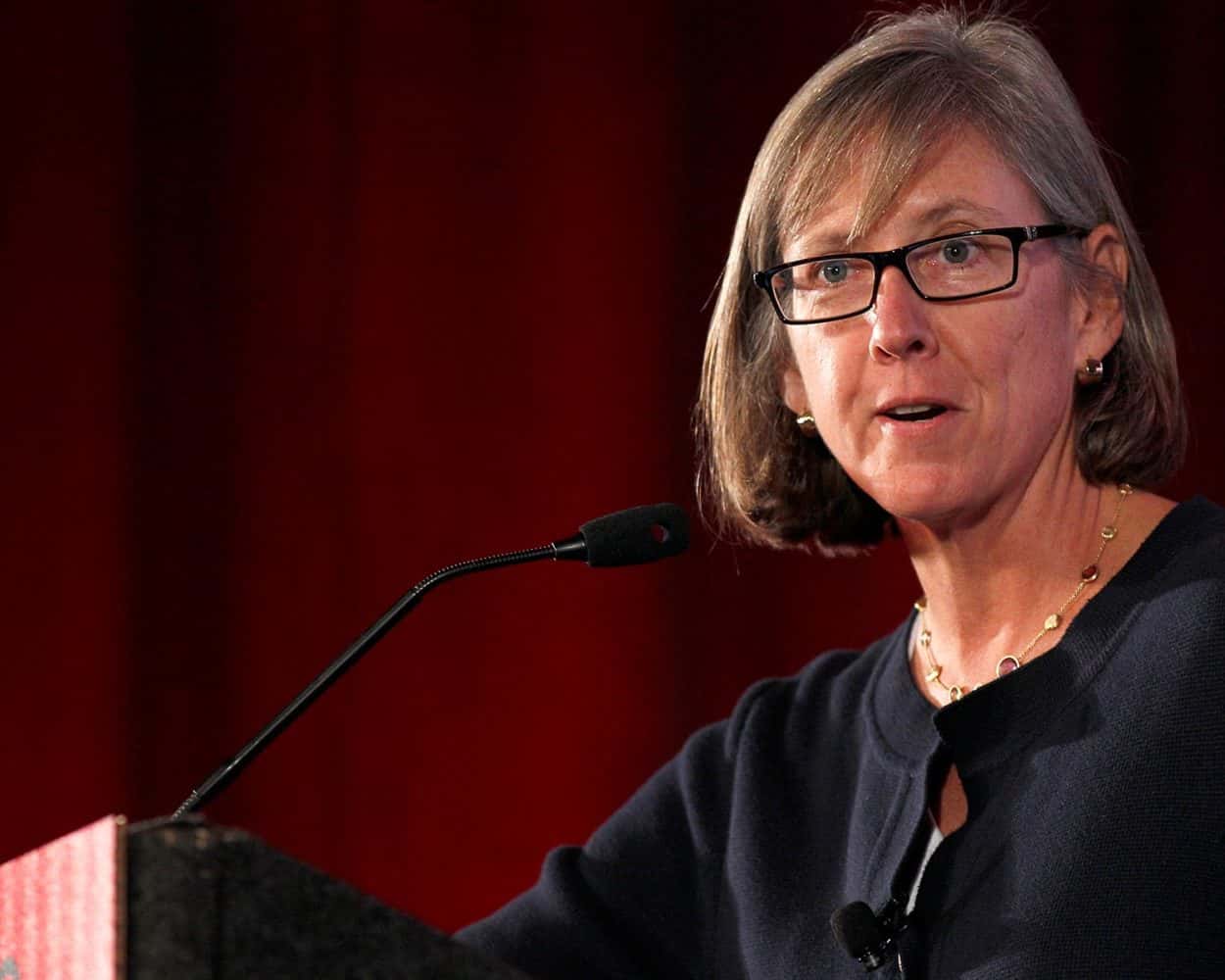Mary Meeker’s 2018 Internet Trends Report – Seven Lessons That You Can Learn
Every year, Bond Capital founder Mary Meeker publishes her Internet Trends Report. Each of these reports holds valuable insight for any business owner.
As a venture capitalist, Mary Meeker has enjoyed a stellar career. In 2019, this founder and head of Bond Capital raised over US$1 billion for capital commitment.
She’s also a former partner at Kleiner Perkins, one of the world’s largest venture capitalist firms.
But it’s not Meeker’s amazing career that we’re going to focus on in this article.
Instead, we’re going to look at an annual report that she creates annually. This report, which typically contains more than 200 slides, captivates the tech giants of Silicon Valley.
And within these reports lies insight that your business can take into the coming months and years.
We’re talking about Meeker’s Internet Trends Report. And in this article, we’re going to look at what you can learn from the 2018 version.
Lesson #1 – People Are Spending Even More Time Online
It’s no big revelation to say that the web changed the way that we do business.
However, you may not realise just how much time the average person spends online. According to Meeker’s report, the average American spent 5.9 hours online per day in 2017. That’s an increase of 0.3 hours compared to 2016.
Think about that for a moment.
Let’s assume that you get eight hours of sleep per night. That leaves 16 hours for the day.
The average American spends more than a third of that time online.
This highlights just how important it is for your business to have a strong online presence. A bog-standard website and basic social media presences aren’t enough. In today’s environment, people will look at your business online before they come to you directly.
Therefore, you need to ensure that your digital presence is strong enough to impress them.
And beyond this, the sheer amount of time that people spend online creates opportunities for you. The more time people spend on the web, the more chance you have of reaching them with your digital marketing campaigns.
If your business has neglected to move with the digital tide, these statistics show you why you need to change. Get online and focus on building a professional presence. Make sure that your marketing incorporates digital techniques that can put you in front of more people.
Lesson #2 – New Online Growth Will Be Harder to Find
We’ve seen new highs in the amount of time that people spend online. However, we’ve also seen a slowdown in the number of people getting online.
According to Meeker’s report, 3.6 billion people now have access to the web. That accounts for about 49% of the world’s population.
While this is excellent news for your digital marketing campaigns, Meeker points to a wider issue:
“The reality for all business people is that, when you get to a market where you reach 50% penetration, new growth becomes a lot harder to find, and that’s where a lot of the industry is at a high level.”
In other words, getting from 50% to 100% will take a lot more effort than getting from 0% to 50%.
How does this affect you as a business person?
The key idea here is that we’ve seen a consistently high increase in the number of new people getting access to the internet. While the number will continue to rise, it will be at a much slower rate in the future.
This means that international businesses may need to adjust. The increase in the number of new people joining the internet “market” will slow down. As a result, you can’t assume that your marketing will hit new people all of the time.
 Lesson #3 – We’re Not Doing Enough to Market for People via Mobile Devices
Lesson #3 – We’re Not Doing Enough to Market for People via Mobile Devices
Meeker’s report also took a deep look into how people consume media in the modern age.
She reached the conclusion that we use our mobile devices for 29% of the media that we consume, and we consume 18% of our media on desktops.
However, the report also points out that businesses allocate an average of 26% of their marketing budgets to mobile.
The result?
According to Meeker, US$7 billion are missed in marketing and sales opportunities.
The lesson here is that, while smartphone sales volumes may have flattened out, we’re spending more time on mobile than ever before. If your website and marketing techniques don’t account for this, you’re missing an opportunity.
Let’s say that you have a video on your website. It runs well on desktops but the display on mobile devices isn’t what it should be.
This means that 29% of your potential audience can’t view that video. They may try, fail, and then just walk away from your business.
We’re not saying that you need to focus solely on mobile going forward. However, it’s clear that you need to prioritise it, especially when it comes to the media that you’re sharing.
Lesson #4 – E-Commerce Continues to Grow
There’s a definite argument to make that we no longer need the “e” in e-commerce.
Buying products via the web has become such a standard thing that we may as well just call it commerce.
And according to Meeker’s report, the growth in e-commerce isn’t going to slow down any time soon.
There was a 16% growth in purchases made online in 2017. This compares favourably to 2016, which saw a 14% growth. The key point here is that more people buy online now than ever before. And the growth is getting faster as more people get online.
Now, let’s put the brakes on a little here.
According to Meeker, e-commerce sales still only make up 13% of all retail sales globally. However, Meeker points out that physical sales continue to decline, while e-commerce sales keep growing.
As she puts it:
“The [e-commerce] transformation continues to accelerate. E-commerce [is] evolving and scaling. When we think of e-commerce today, it is often mobile, interactive, personalized, in the feed, in the inbox, and also often at the front door.”
So, you’re not looking to shut down your physical stores just yet. However, you’re missing an opportunity if you are not yet offering your products and services online. And right now, we’re seeing a gradual shift in power.
We believe that e-commerce sales will keep growing year-on-year. And eventually, they’re likely to surpass physical store sales.
Your business needs to be in a position to take advantage of this growth via a strong online presence.
 Lesson #5 – Subscription Services Are on the Rise
Lesson #5 – Subscription Services Are on the Rise
Meeker’s Internet Trends Report also pointed to some key growth figures for the major subscription services.
In 2017, Netflix saw a 25% growth in subscribers. Spotify managed an amazing 48% growth, with The New York Times hitting 45%.
That’s great news for any business that’s able to offer some form of subscription service. And as The New York Times shows, subscription isn’t limited to streaming services. News outlets can get in on the act, as can software providers. Even coaches and consultants can offer a subscription package for their services.
The key takeaway here is that people are more willing than ever to pay a recurring fee for a service. That is, of course, if that service offer adds consistent value to justify the fee. However, this shows that you don’t need to rely on a single-sale model anymore.
As an added bonus, Meeker offers some advice on how to increase conversions for your subscription service.
Offer a free tier.
Allowing people to try before they buy seems to work exceptionally well. Once they see the value that your service offers, they’re more willing to spend money on getting more of it.
Lesson #6 – Personalisation Is More Important Than Ever
Imagine that you’ve just logged onto LinkedIn. You see your feed with posts and articles, and you’ll have messages from connections and prospects to sort through.
This is an experience that’s uniquely tailored to you and your use of the platform.
You’ll see the same thing on any other social media platform. Your experiences on Facebook and Twitter do not mirror those of anybody else. In fact, the success of social media platforms may come from how they offer a unique experience to everybody.
Meeker points this out in her report. And she says that this level of personalisation has become an expectation in the market.
That means your business needs to find a way to offer it too.
For example, let’s say that you sell products via an online store. That store needs to be able to offer personalised recommendations to customers based on their past actions. Users expect an experience that’s tailored to them and their needs.
Offering the same online experience to everybody isn’t an effective tactic anymore.
Lesson #7 – Your People Want More Flexibility
Meeker’s report also looked at how the web affects the way that we work.
And her conclusion is that people want more flexibility. They want more control over how they earn their money.
She points to the rise in services like Uber and Airbnb as examples of this. Companies like these led to a 23% increase in the on-demand workforce in 2017.
On top of that, we saw freelance workforce growth outstrip total workforce growth by three times.
The lesson for your business is simple.
The internet provides people with more ways to make money than ever before. And the temptation of working for themselves could tempt some talented people away from your team.
You need to stop that from happening if you want to enjoy continued business growth.
You can do this by offering people the flexibility they need. When people feel like they’re stuck in a 9-to-5 grind, they’re more likely to look at other opportunities.
Businesses may need to offer more flexible working hours to compensate for this. Your goal is to make working for you feel more appealing to a working-age person than working for oneself.
The Business Landscape Constantly Evolves
If there’s one thing that Meeker’s reports show us, it’s that business never stays the same. How we work, market, and sell changes constantly.
In this article, we’ve highlighted a few of the key lessons that you can learn from the 2018 Internet Trends Report.
If you haven’t gotten online with your business yet, you need to make a change. Once you’re online, you need to prioritise mobile devices in your marketing and focus on your own business and what you offer to your people.
Take these lessons forward and you’ll continue your business growth.
At CUB our ambition is to unite those who are changing the world through their businesses. We support these people by building a private community of Australia’s next titans of industry. And we bring these titans together to accelerate the achievement of each other’s ambitions.
If you wish to be considered for membership, please feel free to request a club introduction on our membership page: www.cub.club/membership.











